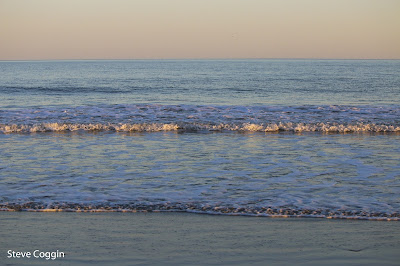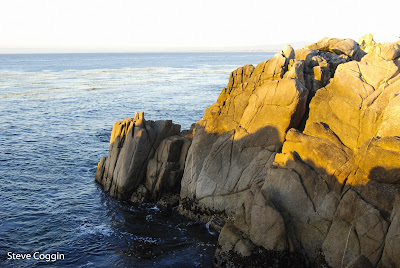Winter is a great time to admire the architecture of
trees. Deciduous trees dropped their
leaves in the fall and their structure is on display for all to admire. The variety of tree shapes is
astounding. Some trees have towering
trunks with their branches high in the air.
Others are small with multiple trunks.
Some trees look like vases or columns or pyramids, some weep.
 |
| A Bald Cypress (Taxodium distichum) with the pyramid shape. Like Christmas trees, this Bald Cypress is widest at the bottom and tapers toward the top. Rowan County, North Carolina. |
 |
| A Red Maple (Acer rubrum) with many trunks growing from the base giving it a vase-like shape. Rowan County, North Carolina. |
 |
| Dwarf Weeping Cherry (Prunus subhirtella). This small tree has a short trunk and numerous contorted branches. The terminal branches hang down and the tree appears to weep. Rowan County, North Carolina. |
The branching pattern of trees has much to do with their shape. Leonardo da Vinci, when he was not painting the Mona Lisa, designing helicopters or making breakthroughs in human anatomy, considered the branching of trees. His fundamental insight about trees is that the cross-sectional area of the trunk is equal to the cross-sectional area of the branches. So, if the main trunk of a tree has a cross-sectional area of 100 square inches and it branches into two main limbs, those two limbs will have a cross-sectional area of about 50 square inches each. This pattern continues with all subsequent branches. If you measure the cross-sectional area of the twigs they will still have a cross-sectional area of 100 square inches.
 |
| Black Gum (Nyssa sylvatica) with a main trunk and many limbs with branches. Rowan County, North Carolina, |
Consider the branching of trees. A branch may divide into two branches and
each of those branches could branch into two more branches. This pattern is repeated
many times in a tree. Iterative branching goes a long way in explaining the shape of trees. Trees are natural examples from the field of
mathematics called fractal geometry. The
Polish-French-American mathematician Benoit Mandlebrot coined the term fractal in
the late 20th century to describe objects that have similar structure
at different scales. If you look at a whole
tree, you find the same basic pattern in the limbs, branches and twigs.
 |
| The fractal branching pattern of an American Sycamore (Platanus occidentalis). Rowan County, North Carolina. |
 |
| Fractal tree canopy in winter. Rowan County, North Carolina |
 |
| Leaves of Tulip Poplar (Liriodendron tulipifera) in high summer. The hundreds of thousands of leaves are supported by the many small branches of the tree. |
Some trees have tall straight trunks and limbs extending out
to the side. Pine trees (Pinus sp.) are
good examples of this structure. When a side limb dies or is broken off, the tree
continues to grow in diameter until the broken limb is entirely overtaken
and is now inside the trunk. This old
limb may be invisible from the outside but, if the tree is converted to lumber,
the old branch is seen as a knot in the wood.
 |
| Shortleaf Pines (Pinus echinata) with tall, straight trunks and limbs branching off. Rowan County, North Carolina. |
 |
| A dead limb on a Shortleaf Pine. Rowan County, North Carolina. |
 |
| The knot in a pine 2x4 is a branch the wood grew over as the tree increased its girth. Rowan County, North Carolina. |
Spring is coming on and soon the trees will be cloaked in green. But the deep structure, the architecture of trees, will still be there.




















